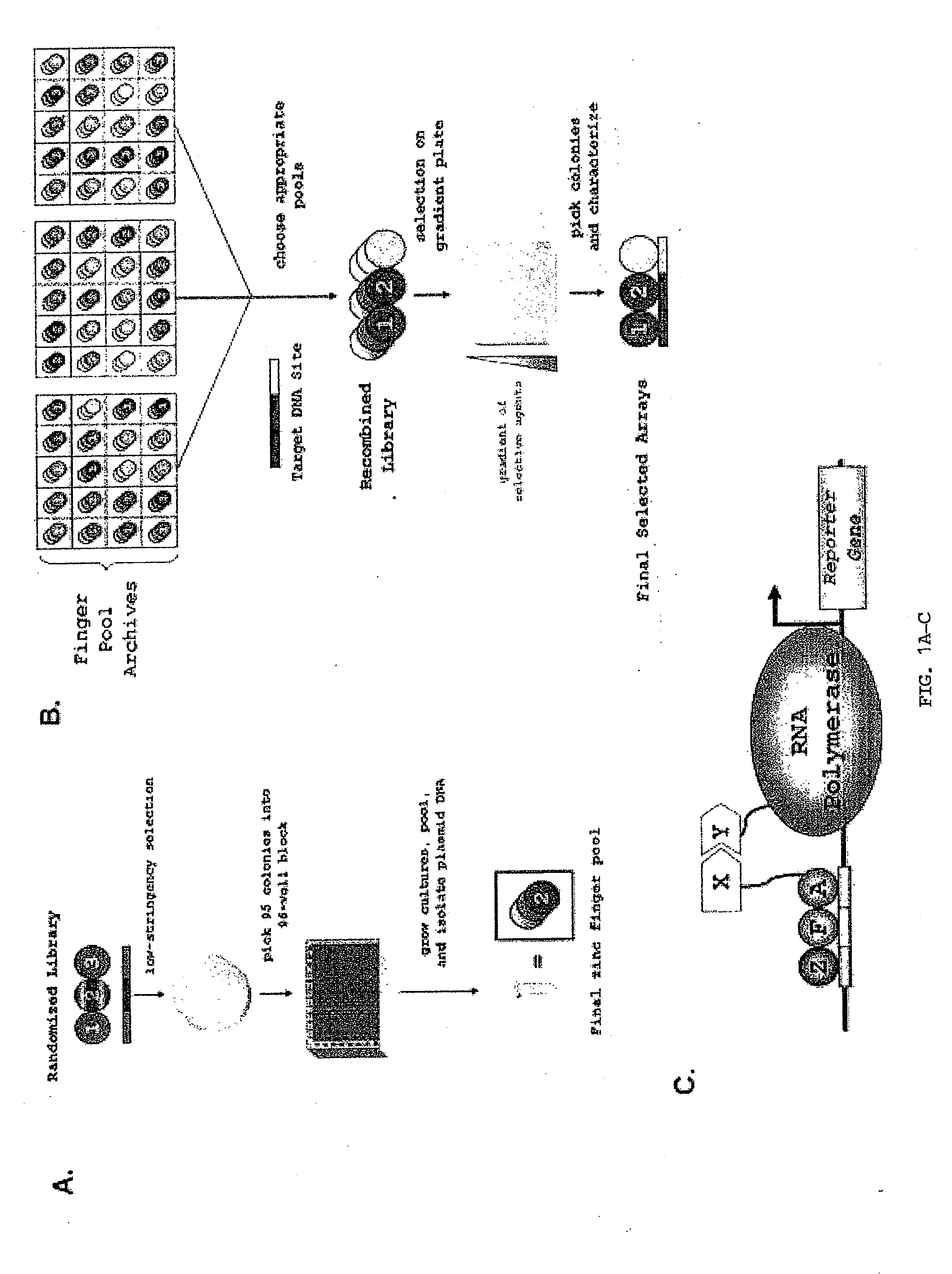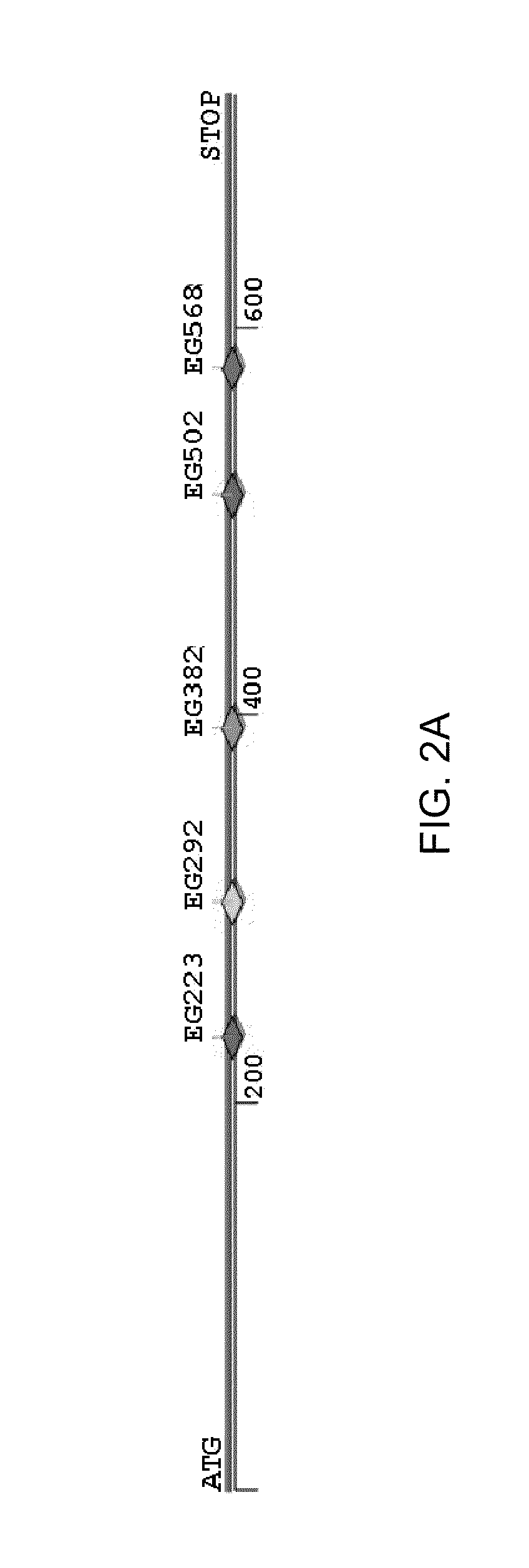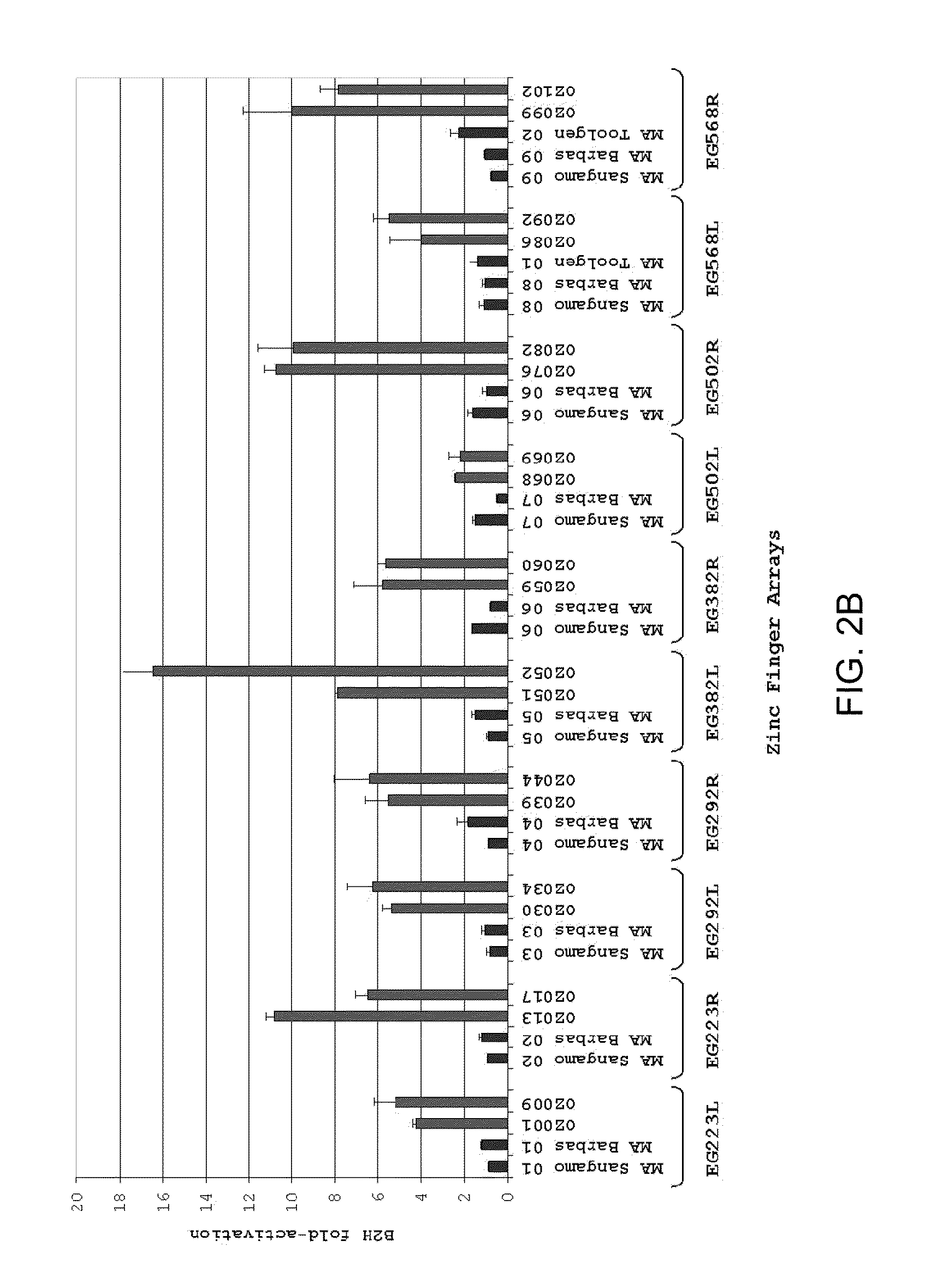Zinc finger nuclease for the cftr gene and methods of use thereof
a zinc finger nuclease and cftr technology, applied in the field of molecular biology and medicine, can solve the problems of repeated lung infections, vitamin deficiency and malnutrition, and severe lung damage,
- Summary
- Abstract
- Description
- Claims
- Application Information
AI Technical Summary
Benefits of technology
Problems solved by technology
Method used
Image
Examples
example 1
Materials & Methods
[0132]Construction of zinc-finger pools. A detailed description of how OPEN zinc-finger pools were constructed is provided in Supplementary Experimental Procedures. In brief, zinc-finger libraries were constructed using cassette mutagenesis to randomize the recognition helix of one finger in a threefinger domain. “B2H selection strains” harboring the target nine by site were constructed as described (Thibodeau-Beganny and Joung, 2007). Zinc-finger pools were obtained using two selection steps: First, randomized library members were introduced into a B2H selection strain and plated on histidine-deficient selective media (NM media) containing 3-AT, a competitive inhibitor of the HIS3 enzyme. Surviving colonies were scraped and infected with M13K07 helper phage to rescue zinc-finger-encoding phagemids as infectious phage particles. Second, rescued phagemids were used to infect fresh B2H selection cells and plated on NM media containing 3-AT and streptomycin. 95 survi...
example 2
Results
[0160]OPEN: a rapid and robust strategy for engineering zinc-finger arrays. Previous work has suggested that context-dependent DNA-binding effects can occur within multi-finger arrays (i.e., the binding activity of one finger may be influenced by neighboring fingers) (Elrod-Erickson et al., 1996; Isalan et al., 1998; Wolfe et al., 1999). Failure to consider these context-dependent effects is a likely reason for the very low success rates observed with modular assembly strategies (Ramirez et al., 2008) which treat individual finger domains as independent units. Various groups have proposed strategies for engineering zinc-finger arrays that identify combinations of fingers from randomized libraries that work well together, thereby accounting for context-dependence.
[0161]Zinc-finger arrays engineered using these approaches possess high DNA-binding affinities and specificities (Greisman and Pabo, 1997; Hurt et al., 2003; Isalan et al., 2001) and function with high activities and ...
PUM
 Login to View More
Login to View More Abstract
Description
Claims
Application Information
 Login to View More
Login to View More - R&D
- Intellectual Property
- Life Sciences
- Materials
- Tech Scout
- Unparalleled Data Quality
- Higher Quality Content
- 60% Fewer Hallucinations
Browse by: Latest US Patents, China's latest patents, Technical Efficacy Thesaurus, Application Domain, Technology Topic, Popular Technical Reports.
© 2025 PatSnap. All rights reserved.Legal|Privacy policy|Modern Slavery Act Transparency Statement|Sitemap|About US| Contact US: help@patsnap.com



